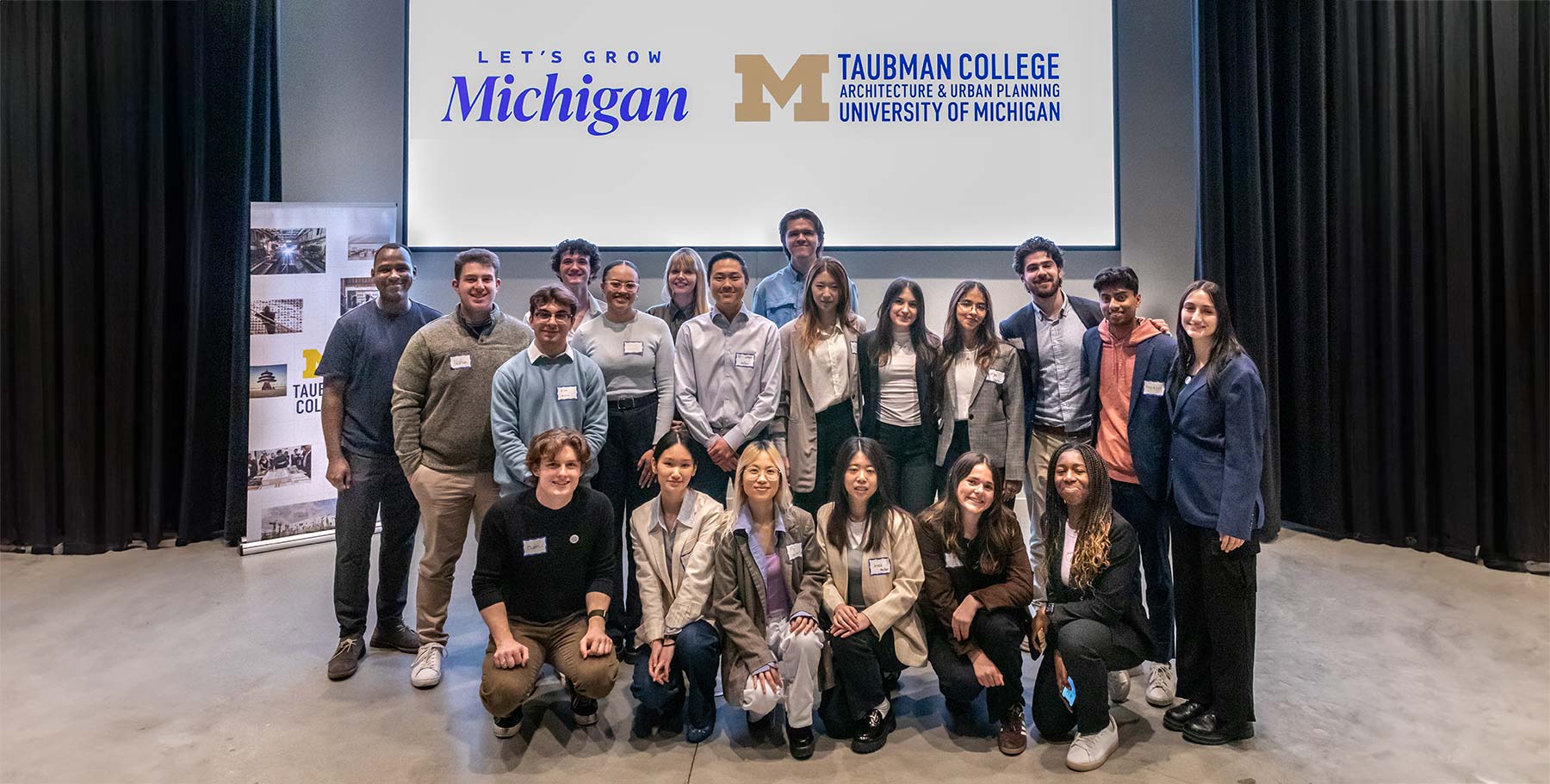Not long after they graduated from Taubman College in 2014, Dillon Erb (left) and Daniel Kobran (right) walked to the Ann Arbor post office to file paperwork for their new software-as-a-service (SaaS) company, Paperspace. They had no idea that, nine years later, DigitalOcean would acquire Paperspace for $111 million.
After filing that paperwork in 2014, Erb and Kobran grew Paperspace from a two-person company to one just shy of 50 employees before the acquisition. Their client list has included HBO, Deloitte, Dropbox, and more.
When they were last profiled in Portico in 2021, Paperspace was navigating the challenges of the COVID-19 pandemic. “The pandemic accelerated the shift to remote work and distributed teams, which is right in our wheelhouse,” said Kobran at the time. “Although we, of course, wish it hadn’t happened in such an unfortunate way.”
“The pandemic was rough,” Erb says. “We had to cut our team down and took a reduced salary for about a year and a half because we just had to stay alive. But we came out of it a stronger company.”
Their ability to navigate the challenges that came their way and their success unlocking the next generation of accelerated cloud applications made Paperspace a perfect fit for DigitalOcean. It’s a company Erb and Kobran had long admired, that is designed to meet the needs of developers looking for simple and affordable cloud computing solutions.
The acquisition has opened up new avenues for Erb, Kobran, and Paperspace, which has remained a stand-alone business unit under the DigitalOcean umbrella. Going from running their own company with around 50 employees to DigitalOcean with over 1,000 employees means many more resources at their disposal.
“Before, we were on call 24 hours a day. Now, there are many more people to help out. DigitalOcean has a massive infrastructure team, operations team, and HR, things we didn’t have. That’s huge. But it’s also weird to have been going a thousand miles an hour and then suddenly being at regular speed,” says Erb.
Slowing down has allowed Erb to shift his focus. He’s now spending more time working with the Advanced Technology Group, which brings in grad students working in AI or related fields to do research with Paperspace.
“That type of collaboration was my favorite thing about Paperspace before we got acquired,” says Erb. “Now I can spend a lot more of my time just working with people who are building out amazing applications.”
“I’m also taking more time to read about AI in architecture and design. It’s moving so quickly, and I’m in the middle of it, and I still feel like I can’t keep up. Having more time to focus on that has been great,” says Erb. “I’m still obsessed with architecture and design and would like to spend as much time as possible in that space.”
Kobran points out that Erb anticipated today’s AI advancements as a student. He says, “Dillon’s master’s thesis at Taubman essentially predicted the entire generative AI explosion we’re seeing right now where AI models can hallucinate photorealistic imagery based on simple prompts.”
While theirs may not have been a traditional path after architecture school, Erb and Kobran credit much of their success to what they learned at Taubman College.
“There were so many things about architecture education that helped us. One was critique. You have to get in front of people and explain what you’re working on. And that’s still almost 80% of what I do, just convincing people to do something by getting in front of them and laying it out for them whether we need money, time, resources, or something else.”
“Another piece is that, as an architecture student, you put in such crazy hours because you’re passionate, you love it. When we went to Y Combinator, an accelerator, we realized we could just work harder. We had done fast iterative work for many years at Taubman.”
“And finally, there’s such value in being a visual communicator. The fact that we could quickly put decks, graphics, or diagrams together was incredibly helpful.”
Erb and Kobran were also both Taubman Scholars, an honor funded by Mr. Taubman’s naming gift. Erb had the chance to meet Mr. Taubman as a student.
Looking back, both realize that, if not for the serendipity of them being in the same studio, Paperspace likely wouldn’t exist.
“We’re very grateful. I think it’s fair to say that being Taubman Scholars made it possible for us to attend and thrive at Taubman College, and, if not for that, we wouldn’t have met, and we’d have been on a very different path,” says Erb.
Portico: Fall 2023
- Patricia Gruits, B.S. Arch ’04, M.Arch ’06, is Doing More with Purpose-Driven Architecture
- Whitney Kraus, B.S. Arch ’05, Bridges the Gap Between Designers and Developers
- Rich von Luhrte, B.Arch ’68, Funds Scholarships to Continue His Legacy of Addressing Climate Change
- Dillon Erb, M.Arch ’14, and Daniel Kobran, M.Arch ’14, Explore the Benefits of Paperspace’s Acquisition by DigitalOcean
- From Michigan to Ghana to Michigan: Architecture as Culture, Collaboration, and Community
- Celebrating Twenty-Five Years as Taubman College
- Help Taubman College Build Tomorrow: Martin Rodriguez Jr.’s Story





